
W A T E R
Markets
W A T E R
Markets
P RIMING THE I NVISIBLE P UMP
T ERRY L. A NDERSON AND P AMELA S NYDER
INSTITUTE
Washington, D.C.
Copyright 1997 by the Cato Institute.
All rights reserved.
Library of Congress Cataloging-in-Publication Data
Anderson, Terry Lee, 1946-
Water markets: priming the invisible pump / Terry L. Anderson & Pamela Snyder.
p. cm.
Includes bibliographical references and index.
ISBN 1-882577-43-4. - ISBN 1-882577-44-2 (pbk.)
1. Water-supply-Economic aspects-United States. I. Snyder, Pamela. II. Title.
| 333.91 '16'0973-dc21 | 97-14369 |
| CIP |
Printed in the United States of America.
C ATO I NSTITUTE
1000 Massachusetts Ave., N.W.
Washington, D.C. 20001
Acknowledgments
In the early 1980s, I began conducting research on the prospects for using markets to solve water problems. Since that time, giant strides forward have been made in water marketing. This book builds on the first edition of Water Crisis: Ending the Policy Drought and updates the progress that has been made. It also suggests where further advances are possible.
The project began as a minor revision of Water Crisis: Ending the Policy Drought but turned into a new book for two reasons. First, the changes that have occurred in water policy have been significant. What were calls for dramatic reforms to allow water marketing in 1983 have become commonplace approaches in 1996. Second, the contribution of my coauthor, Pam Snyder, clearly turned the revision into a new book. Comparing this book to the earlier one reveals her fresh insights and legal expertise.
We thank the Cato Institute for supporting this project. Jerry Taylor encouraged us to do it and shepherded it through the publication process, and Peter Van Doren provided useful editorial comments.
Fortunately a number of organizations have provided general support that made our research possible. Special thanks to the Sarah Scaife Foundation, Lilly Endowment, Inc., Procter & Gamble, the Liberty Fund, and the Roe Foundation.
Finally, we wish to acknowledge support and contributions from our colleagues at PERC (the Political Economy Research Center). Holly Lippke Fretwell provided research assistance on global water issues. We borrowed heavily from Don Leal's insights into the application of markets to instream flows. As usual, support from Monica Lane Guenther, Michelle Johnson, Pam Malyurek, and Dianna Rienhart was invaluable. The reader can thank all these people for making the book better and blame us for not taking their advice more often.
Terry L . Anderson
1. Why Water Crises?
Droughts epitomize water scarcity. But while droughts capture headlines and our attention, the far greater threat posed by escalating water consumption goes largely unnoticed-our water use is depleting and exceeding the limits of natural systems in many parts of the world. "Signs of water stress abound. Water tables are falling, lakes are shrinking, and wetlands are disappearing" (Postel 1992, 18-19). As population continues to increase, and water shortages become more common, we are forced to wonder: Are we running out of water?
The Evidence
With most natural resources, concern over future availability is based on an inventory view. This view compares existing or predicted quantities of resource availability with predicted consumption patterns. Whenever rising rates of consumption collide with declining availability, a crisis is predicted. Many general studies of resource use have concluded that both renewable and nonrenewable resources are being used at an alarming rate. The Limits to Growth study, originally published in the early 1970s, for example, was bold enough to pinpoint a year early in the next century when our growing consumption of resources will collide with our dwindling supplies (Meadows et al. 1972). The Global 2000 Report, a similar study commissioned by the Carter administration, concluded:
If present trends continue, the world in 2000 will be more crowded, more polluted, less stable ecologically, and more vulnerable to disruption than the world we live in now. Serious stresses involving population, resources, and environment are clearly visible ahead. (Council on Environmental Quality [CEQ] 1980, 1)
These same conclusions also have been reached regarding the availability of water. The U.S. Water Resources Council (USWRC) has estimated the availability of the nation's water resources and concluded that
on the average, about 40,000 bgd (billion gallons per day) of water passes over the coterminous United States in the form of water vapor. Of this, approximately 10 per cent (about 4,200 bgd) is precipitated as rainfall, snow, sleet, or hail. The remainder continues in atmospheric suspension. Of the 4,200 bgd ... about 2,750 bgd is evaporated immediately from the wet surfaces or transpired by vegetation. The remaining 1,450 bgd accumulates in ground or surface storage; flows to the oceans, the Gulf of Mexico or across the Nation's boundaries; is consumptively used; or is evaporated from reservoirs. (USWRC 1978, 12)
Since the beginning of the 20th century, the U.S. population increased 200 percent while per capita water use shot up 500 to 800 percent (Kenski 1990, 5). Between 1960 and 1970, water use in the United States increased 37 percent (270 bgd to 370 bgd) and increased another 22 percent between 1970 and 1980 (370 bgd to 420 bgd) (Conservation Foundation 1987,225).
Water consumption, like withdrawals, also has increased steadily for most water uses. On average, about one-fourth of the water withdrawn in the United States is consumed. The other three-fourths returns to surface-water or ground-water supplies. However, the growth in consumption appears to be slowing down. "Between 1970 and 1980, consumption increased by only 14 percent, compared with a 44 percent increase [during] the previous decade" (Conservation Foundation 1987, 226-227). See Figure 1.1.
The slowdown in the growth rate of consumption is generally attributed to a decline in industrial withdrawals resulting from improvements in production and technology and tougher laws on water pollution that encourage water conservation in production processes (U.S. Geological Survey [USGS] 1990,81-83).
While the difference between withdrawal and consumption might indicate a plentiful water supply rather than a shortage, some of the water must be left to flow into Canada and Mexico. Furthermore, locational demands for water do not always coincide with supplies. For example, the western United States receives less rainfall than the East. Southern California receives less than inches of rain each year, compared with 33 inches in Chicago and 44 in New York. Nevertheless, 80 percent of the nation's water is consumed in the West. With California's population mushrooming from 20 to 30 million in the last 20 years, the demand for water west of the 95th meridian is not likely to decrease (World Resources Institute 1993, 35; Conservation Foundation 1987, 229).
Figure 1.1
T RENDS IN U.S. W ATER W ITHDRAWALS AND C ONSUMPTION
1960-1990


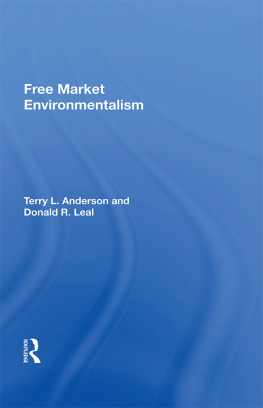
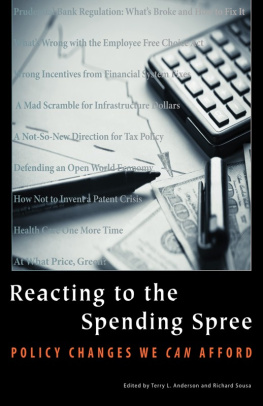


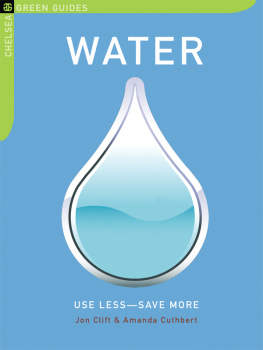
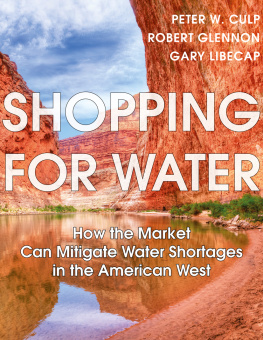
![David E Newton] - The global water crisis : a reference handbook](/uploads/posts/book/104432/thumbs/david-e-newton-the-global-water-crisis-a.jpg)
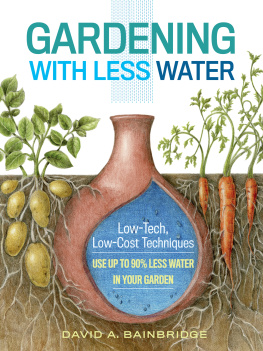
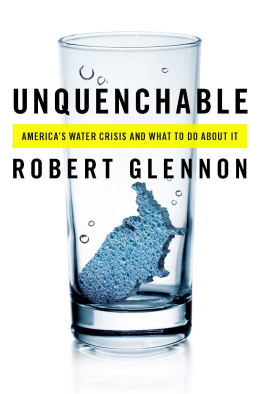

 W A T E R
W A T E R
